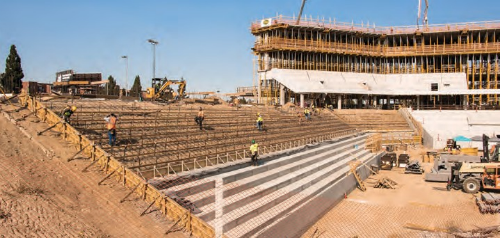Los Angeles County continues to experience declining unemployment rates. According to the LA County Economic Development Corporation, unemployment in LA County is at its lowest rate since 2000. In fact, job growth was on a positive uptick during this same period. Despite these positive economic indicators, Los Angeles County job growth has not kept pace with the growing population. This imbalance is further exacerbated by a rising homeless population and lack of workforce readiness particularly for jobs requiring technical skills.
A strong workforce is critical in responding to the continued economic growth in Los Angeles County. However, workforce development goes beyond economic drivers. The intersectionality of a strong workforce, education, and opportunity can change the trajectory of an individual’s life and, therefore, cannot be underestimated. Systemic issues within economically disadvantaged areas continue to hold opportunity at bay. As employers, what can we do? What should we do?
Workforce development has social, business, and community implications that impact the bottom line. Career readiness, especially for those living in lower socioeconomic areas, is not necessarily an attainable goal due to a lack of financial resources or access to programs and career information. Without career readiness resources, the cycleof hiring, or lack thereof, and economic impacts continue. Employers can work with workforce development organizations, such as 2nd Call, to access talent who are focused and committed to participating in an apprentice program for a variety of trades. Programs like those offered at 2nd Call and Flintridge Center positively impact the participants and the employers who hire the graduates by providing students access to living wage jobs and the opportunity for employers to hire trained workers. Workforce development is a hand up, not a hand out.
Workforce development benefits large and small businesses. Capacity building and scalability are key. Initiatives that build skill-set capacity and support at risk populations, such as those with a criminal record and foster youth, can be an integral component in reducing the rate of recidivism, increasing the likelihood this disadvantaged population can live independently, and providing employers with long-term access to a technically experienced workforce. The use of workforce development programs can be scaled larger or smaller depending on the needs of the business. Because most programs are community-based, the workers may live and work in their own communities which means the economic benefits and income generation from employers stays in the communities they serve. Ultimately a winning proposition is created for both businesses and local workers.
There are multiple reasons why workforce development is good for business, but how do you effectively utilize this community resource? Here are a few suggestions.
Workforce development is an opportunity to leverage community partnerships and raise awareness of programs tailored to disadvantaged populations that may be overlooked, but can provide skilled talent. Partnerships with job readiness programs through organizations like 2nd Call and Flintridge Center benefits businesses and workers alike.
Capacity building not only applies to workers, but also benefits small businesses. When larger enterprises mentor small businesses and help them develop best practices in critical areas, such as workforce training, safety and quality, small businesses can confidently and effectively take on larger projects. This was the case with J. Francis, a woman-owned waterproofing contractor. The firm has worked with PCL Construction on multiple projects with an average contract value of $300,000. Then they were asked to bid on the Banc of California Stadium for a contract worth $3 million. Upon award, PCL’s team worked with J. Francis to develop a risk mitigation plan that leveraged J. Francis’ strengths and focused on workforce training, safety and quality. Because of PCL’s guidance in helping J. Francis build their business capacity to work on the stadium, they are more confident and well positioned to work on larger projects.
Widen the circle of resources used to recruit and hire vendors and other partners. Instead of utilizing the standard vendor list we always use, expand the list with small and local businesses you may not have worked with in the past. When recruiting interns and new hires, reach out to campuses you may not typically recruit and intentionally include Hispanic Serving Institutions (HSIs) or Historically Black Colleges and Universities (HBCUs) in your recruiting plan.
A colleague once told me when we don’t intentionally include, we may unintentionally exclude. At its core, workforce development promotes inclusion, collaboration, and diversity of thought based on our own lived experiences. This perspective is a bonus for our organizations, employees, and the communities we serve.
Dr. Paula Stamp is Director of Business Development for PCL Construction.

